
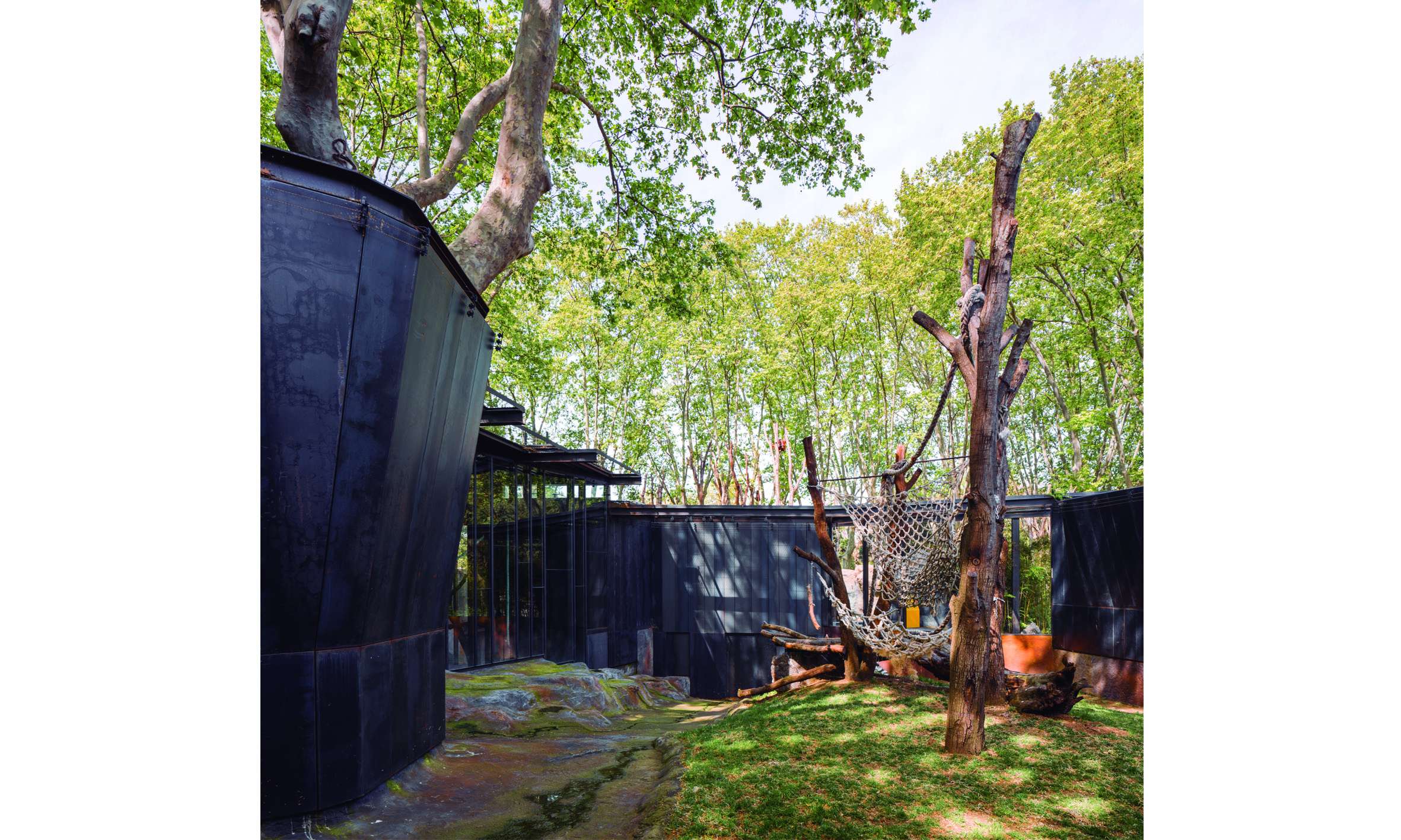

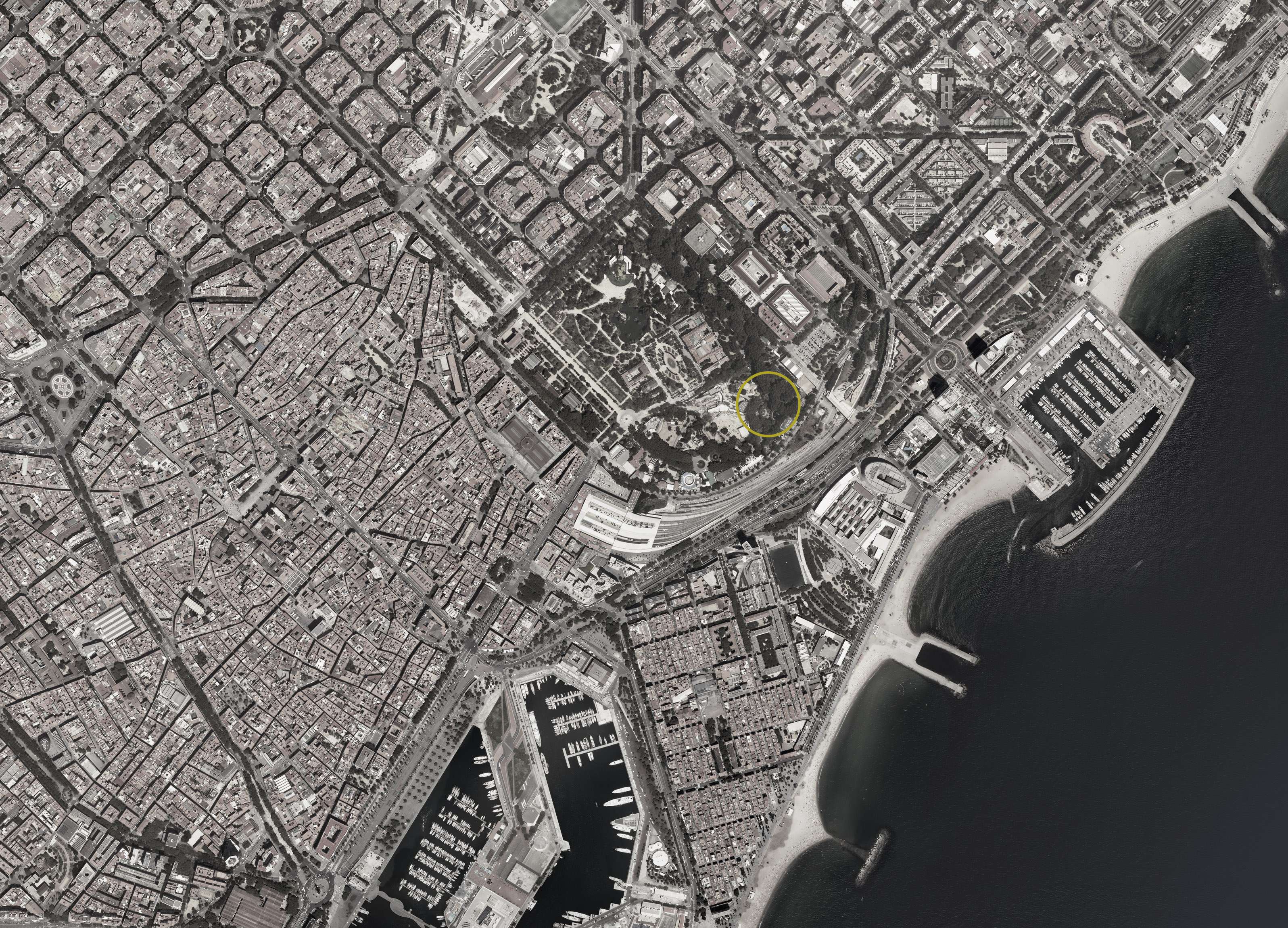
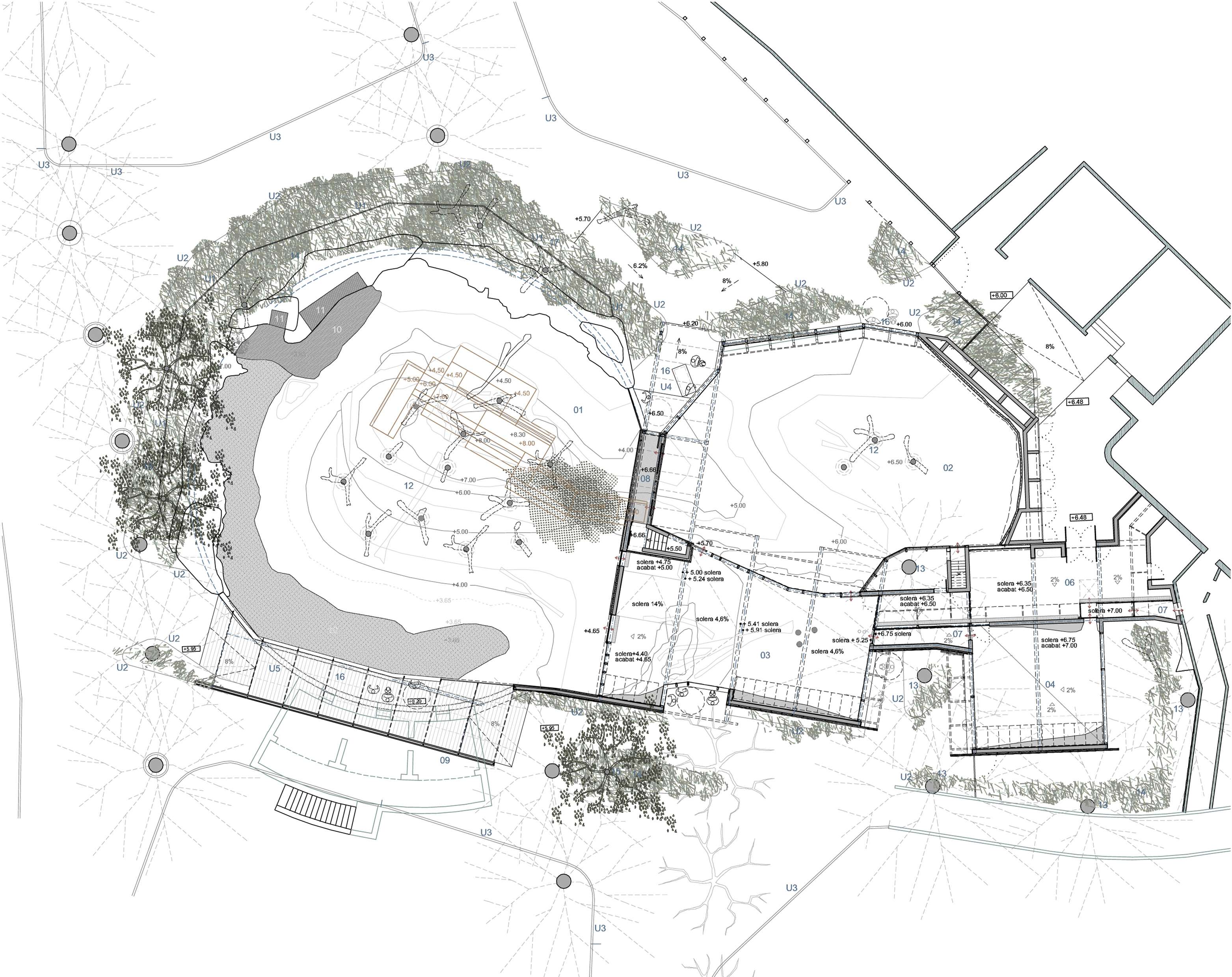
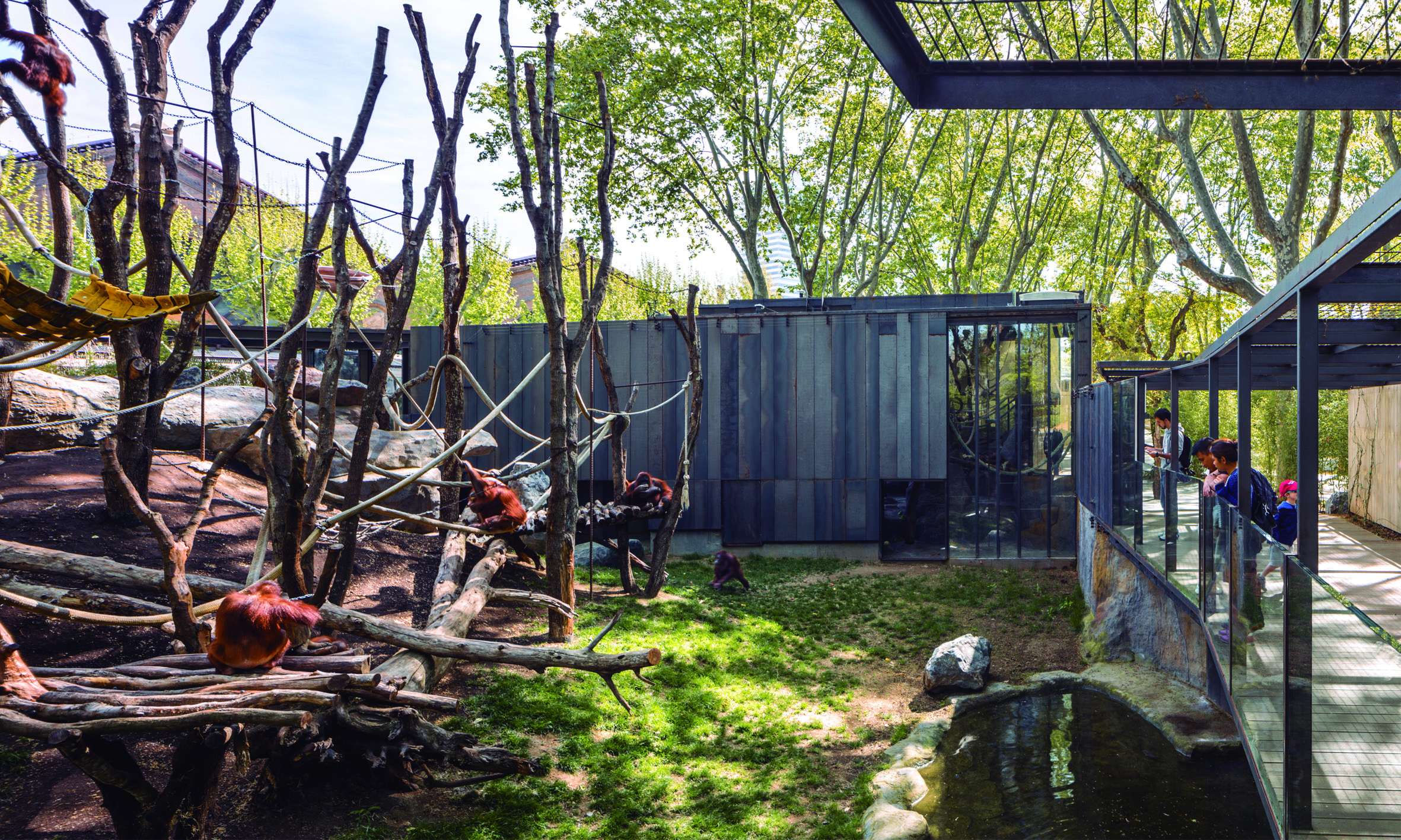
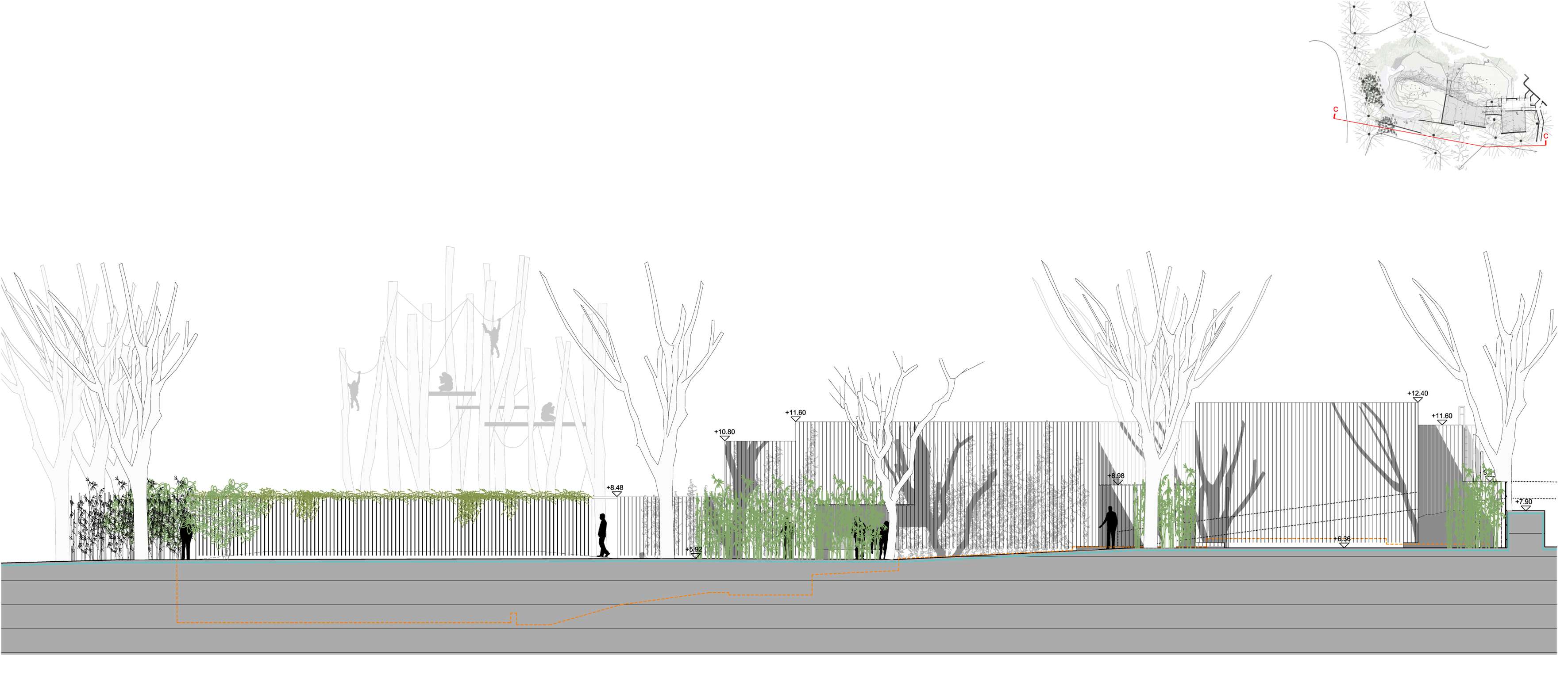

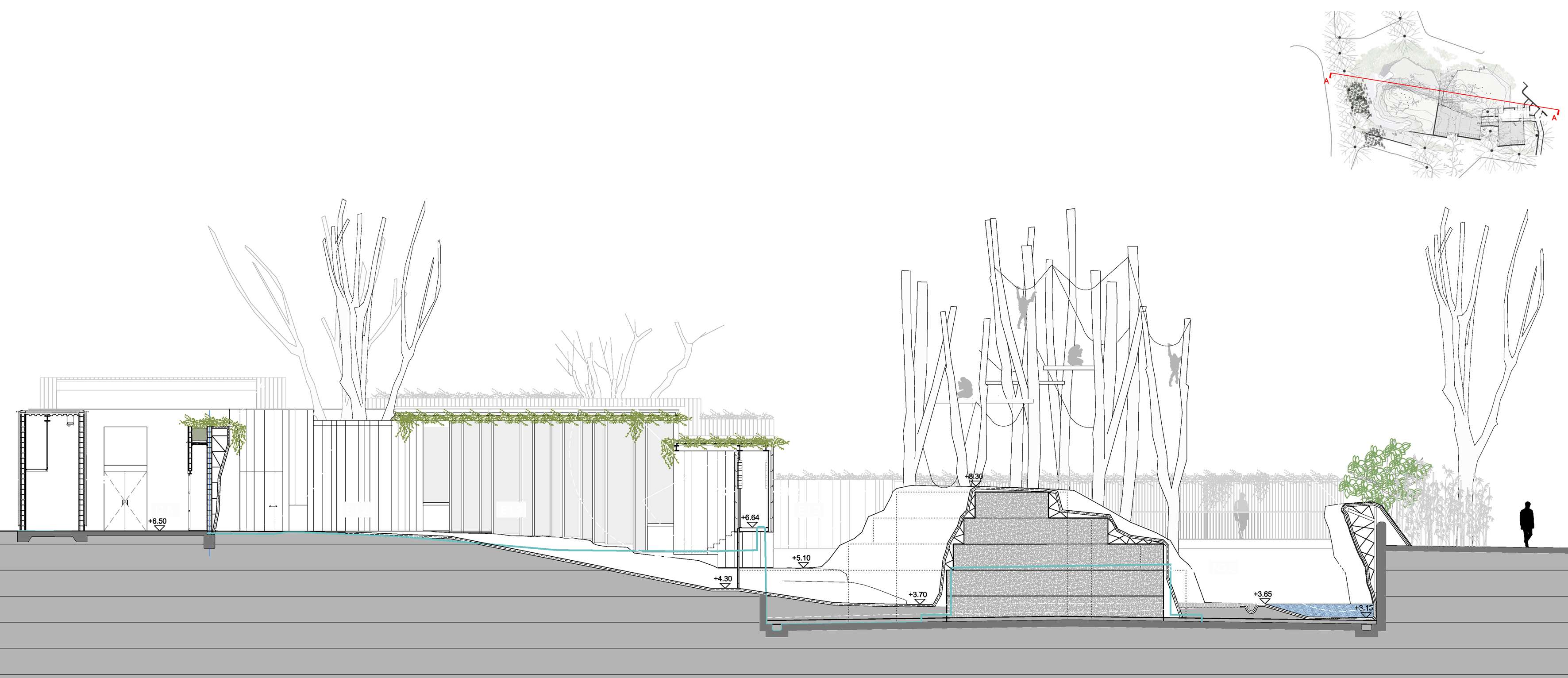

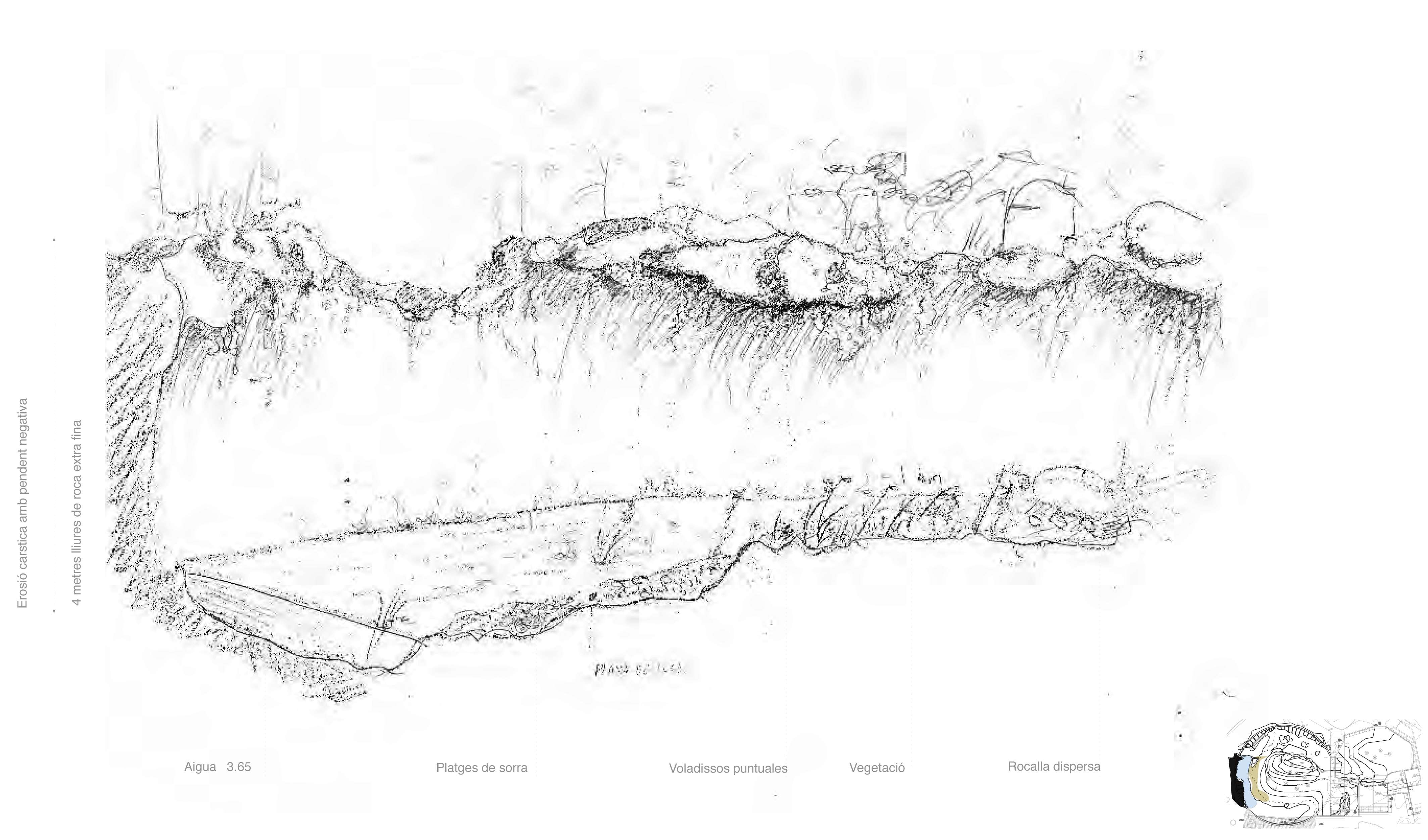
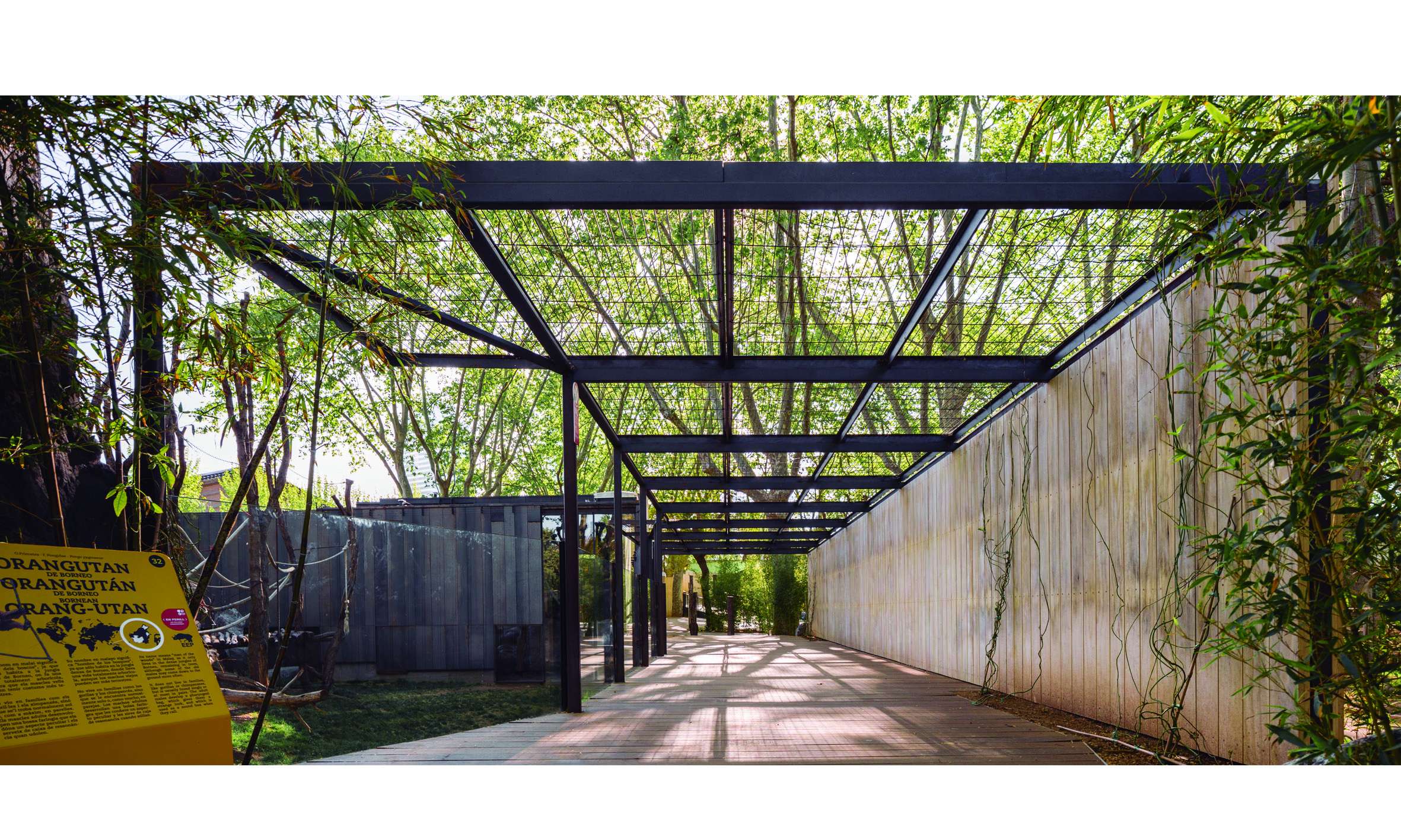



Instalación de los orangutanes en el Zoo de Barcelona
Instal·lació dels orangutans al Zoo de Barcelona
Reform of Orangutan's space in the Zoo of Barcelona
(ES)
Los orangutanes son una especie en peligro de extinción con altas capacidades cognitivas y mucha fuerza y destreza pera manipular y accionar mecanismos. Aunque tienen vida social, algunos machos tienen un carácter solitario y dominante i no toleran fácilmente la presencia de otros machos.
Su idiosincrasia comporta una instalación con diferentes espacios que permitan una segregación y ocupación flexible. La propuesta contempla un recorrido pera el público y cuatro ambientes para los orangutanes: dos espacios climatizados que permiten el resguardo cuando la climatología es adversa, y dos espacios abiertos dónde los animales pueden gozar del sol y de un ambiente más natural.
Los espacios cerrados disponen de grandes vidrieras que crean un espacio interior cálido y diáfano y permiten visuales transversales de la instalación y sus habitantes. Se trata de diluir los límites entre los diferentes recintos generando una percepción de continuidad entre ellos. Los elementos de naturalización i enriquecimiento se extienden indistintamente por los diferentes espacios favoreciendo esta continuidad.
Los espacios exteriores aprovechan el antiguo foso, actualmente obsoleto y evocan una hondonada de rocas en la que fluye una pequeña cascada que, a su vez, alimenta un arroyo. El agua genera un límite seguro y diáfano, propiciando la buena visibilidad y la proximidad de los visitantes y evitando un exceso de intrusismo. El sonido de la cascada aísla al visitante de entorno más cercano y favorece la intensidad de la visita.
Los bordes exteriores de las instalaciones son un bosque de bambús que actúa como diafragma de entrada al recinto. Las pérgolas vegetales que acompañan el recorrido del público generan un ambiente sombreado y ayudan a hacer más confortables y menos aparentes los miradores del público
La multiplicidad de ambientes y estructuras promueven tanto la actividad y el estímulo de los animales como su posible descanso y tranquilidad, permitiendo desarrollar conductas propias de la especie de manera similar a como lo harían en sus hábitats naturales. Diferentes elementos verticales en forma de percha facilitan que los orangutanes, con una locomoción básicamente arborícola, puedan desplazarse por todo el espacio.
Se ha puesto especial cuidado en los aspectos de seguridad, gestión i bienestar de los animales proporcionando al visitante una visión intimista y compleja, sin renunciar a la abstracción y a la expresión de la arquitectura y del paisaje que lo rodea. Interiores y exteriores se mezclan buscando una relación próxima y equilibrada entre personas y orangutanes de acuerdo con las nuevas exigencias de carácter ético, científico, educativo y recreativo de las instalaciones zoológicas.
(ENG)
Orangutans are an endangered species with high cognitive capacities, with strength and skills to manipulate and drive any kind of mechanisms. Even if they have a social life, some males are lonely and dominating by nature and don’t easily tolerate other male’s presence.
Their idiosyncrasy involves an installation with different spaces that enhance both flexible segregation and occupation. The project includes a route for the visitors and also four different environments for the orangutans: two air-conditioned ones that shelter them during bad weather, and two more open spaces where the animals can enjoy a healthier and sunnier environment.
The enclosed spaces have large glass windows that create an interior space full of light, clear and diaphanous and allow transversal visuals of the installation and its residents. The proposal pursues to shadow the limits between the different spaces and create a perception of continuity between them. The naturalization and enrichment elements are indifferently extended amongst the spaces to enhance this continuity.
The outdoor areas use a pre-existing and obsolete ditch that recalls a rocking hollow with a waterfall that nourishes which feed a little stream. The stream water creates a safe and invisible limit with good perspective and closeness to the visitors but avoids an excessive intrusiveness. The sound of gurgling water isolates the visitor from the environment and promotes the intensity of the tour.
The outdoor pavements of the enclosure are a bamboo forest that acts as a welcome diaphragm for the visitor. The vegetable pergolas that guide the visitor through the route create a shaded atmosphere that helps making the viewpoints more comfortable and less visible.
The multiple ambiences and structures enhance physical activity and encourage the animals to rest taking breaks, allows them to develop their own species’ behaviours in the same way that they would do it in their natural habitats. Additionally, different vertical elements in a hanger shape ease the orangutans’ movement within the space in arboreal locomotion.
Special care has been taken into account in terms of safety, management and well-being of the animals to provide visitors with an intimist and complex sight with no need to give up the architecture and surrounding landscape ’s abstraction and expression. Outdoor and indoor spaces are mixed aiming a close and stable relationship between humans and orangutans according to new ethical, scientific, educative and recreative requirements of the zoo facilities.
